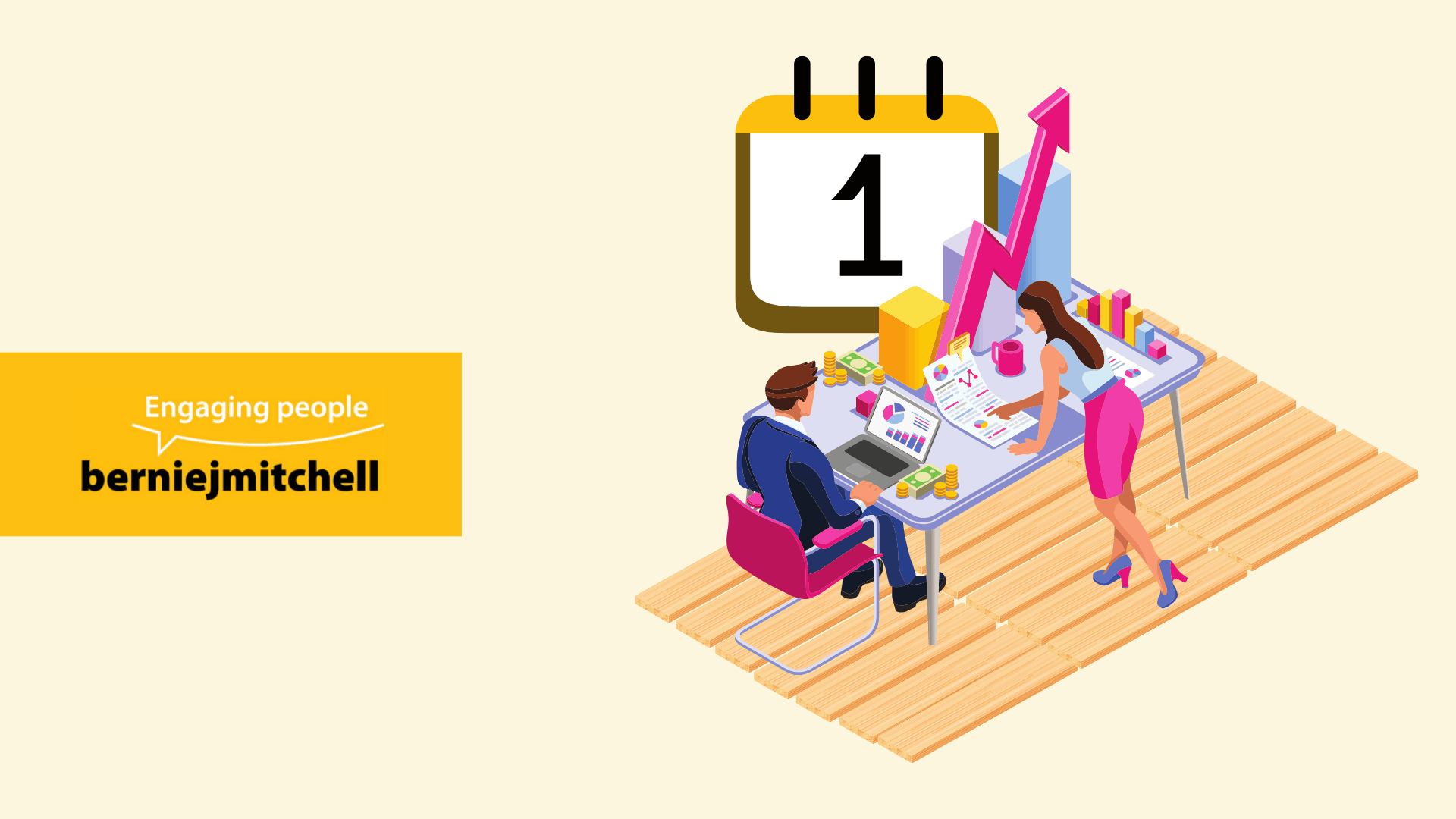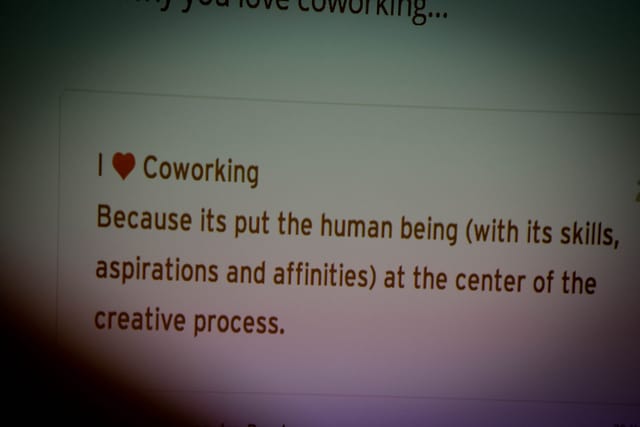Planning Your Business 12 Weeks at a Time
With the summer months approaching Christmas is probably the furthest thing from most people’s minds. If you are hoping to build your current coworking space, or start a new one, now is the time to start looking towards the end of the year so 2021 can be more successful than you imagine.
I recently spoke to Carsten of Desk Mag to find out when people are most likely to join a coworking space. His response was sometime around or after a major holiday.
In the Northern Hemisphere (the States and Europe) most of the main holidays are after summer and into Christmas.
This means that the majority of people who are joining a new coworking space will do so in September and in January.
The same goes for many types of new business ventures.
Most people don’t really know what they will be doing three months from now.
Many times people will have a vague goal, reach that goal. However, once they actually get to the point they want to be at they don’t look back. They don’t even question if they could have gotten there in a more productive way.
The 12-Week Year Plan
I found a book a few years ago called The 12-Week Year. It explains the process of planning your goals 12 weeks at a time instead of 12 months.
A great example of why the 12-week plan is important is the current situation everyone is experiencing with Covid19.
Six months ago everyone was making their summer plans, whether it be for holidays or business, and now all of those plans have changed.
By following the 12-week plan it allows you to be more flexible and adapt to whatever is happening in your community or across the globe.
I was given some great advice by Belinda about how to market during something like a global pandemic.
She said, “don’t think about what you sell, but think about who you serve and what do they want you to be able to offer them right now?”
Distancing does not mean Disconnecting
While you might not be able to operate your business like normal, you can still stay connected to the people you serve.
A great example of this is doing things like uploading informational videos or articles to your website and social media accounts.
You might not be able to sell right now, but you can make sure you aren’t forgotten about.
Asking yourself what you can offer the people you serve can really help you move forward over the next 12 weeks. Even though you might feel stuck, not only at home but with your business goals as well.
Making the 12-Week Year Plan Work
I started following the 12-week plan in 2016 while I was a member of a coworking space. We would meet every Monday and share our goals for the week.
It was a great way to stay focused and have accountability. These meetings eventually stopped due to fluctuating commitments from the various members, but my friend Karen and I decided to carry on.
Every Monday since 2016 Karen and I have an accountability call in which we state our goals and intentions that week to each other.
Even though Karen and I are in different careers, she runs a swimming school and I’m a freelancer, our ambitions and intentions have similarly evolved over the years. And we are both much more realistic about how we plan on meeting our goals.
The 12-Week Year has been instrumental in not only growing my business but also reaching my goals in a more realistic way. Here are some of the most important lessons I’ve learned and how they can help you grow your business or coworking space.
Accountability
Having an accountability partner ups your chances of being successful no matter what your goals are.
For example, if I’m trying to lose weight I can be great at staying focused, eating well, and exercising…until I go on holiday.
Once I’m on holiday my goals go out the window and I end up eating for pleasure, not health. After I return from holiday it’s super hard for me to get back on track.
Having an accountability partner who will help remind you of your goals and call you out when you veer off track is so important.
Finding a group of people, or even a single person, to talk about your goals each week will make you much more likely to get back on the wagon when you fall off.
And we all fall off at some point.
Building an Audience
Many business owners and freelancers have days where they wake up and go into a panic about the number of customers and clients they have.
We feel a sudden need to jump on social media and do what I call a “panic promotion” in hope that we’ll magically grow our clientele overnight.
If you’ve tried this, you know it very rarely works. Our promotion might be great, but people won’t trust it or us. This is because it takes time, trust, and understanding to build an audience who is willing to spend their money on whatever it is that you’re offering.
Your audience can be seen as your community. Very often you’ll have two communities that can help you build your business. You’ll have the community that is inside your space, who will work with you, use your services, and can help grow your income.
The other community, that can be equally important, is the one that won’t hire you or give you money directly, but they will support your business and help spread the word about what you do.
E-Mailing
When it comes to reaching out to potential clients or customers, many freelancers immediately think of social media. Social media is a really, really, really important aspect of building awareness, but one of the best things you can do for your business is to build an email list and actually use it.
Why is email so underused as a tool for business when it’s now a more common form of communication than calling or even texting people?
Fear. People get scared about sending emails when they aren’t confident about what they’re selling.
There are two books, Youtility by Jay Baer and They Ask You Answer by Marcus Sheridan, that can really help you understand how important good emails are to any marketing plan.
One of the key aspects of sending emails that people will actually read is to make sure they are useful, relevant, and timely. The more people benefit and trust the emails you send them, the more likely they are to open them.
Having someone sign up for your email list is more valuable than a follow on social media where your post has a pretty good chance of getting lost among the other thousands of posts on someone’s feed.
There’s a site called copyblogger.com that I use quite often. One of the stats on their website, which seems very believable to me, is that for every dollar spent on acquiring an email, you’ll get $40 in return.
Never underestimate the importance of sending emails.
Also, always have your email above the fold on your website and avoid pop-ups at all costs. They are annoying and can cause people to leave your website simply out of frustration or annoyance if they are on a cell phone because they can be hard to click out of.
Keeping Your Website Updated
Having a website is pointless if you aren’t updating it at least twice a week with quality content. This can be in the form of blogs, videos, articles…as long as it’s something interesting that helps you tell your story and connect with the people in your community.
Part of the 12 Week Plan is to figure out what you’re going to post every week over the next three months. Having the topics figured out ahead of time makes achieving this goal a lot easier than just sitting in front of your computer every few days and trying to figure out what the heck you’re going to post.
Some ideas for posts are:
Interviews with fellow freelancers or small business owners from your coworking space.
Talking about an event you’re hosting or going to.
The history of your business.
FAQs (this will allow your customers/clients to find answers themselves so you don’t need to waste time answering the same things over and over again.)
Whatever you write about, just make sure it allows your community to connect with you in some way.
Once you have these topics planned out, you can then coordinate the emails you’ll be sending to go along with the topics on your website.
Social Media
The three major social media outlets for businesses and freelancers are Twitter, Facebook, and LinkedIn.
LinkedIn has the people who are most likely to have money and are willing to spend it on a coworking space/other businesses.
Facebook is where people go to waste time and Twitter..well it might help you get a few new followers, but it’s very quickly turning into a place of political discord, which isn’t going to be beneficial in growing your community.
While it’s perfectly fine to use all forms of social media, LinkedIn is the best. It’s filled with business people on the hunt to do business with others. It’s also a paid platform which means people feel more invested to use it and take it seriously.
If you decided to use LinkedIn to try and grow your community with the 12 Week Plan, make sure that anything you post on your website you also post on your LinkedIn Blog. People who post regularly on LinkedIn over longer periods of time tend to get a lot of attention. And don’t be afraid to post lengthy blogs on LinkedIn. Although fewer people will read them, more people will take action on a longer post. Don’t write a little and then make them click over to your website to read the rest, this is annoying and honestly comes off as a little desperate.
The 12-Week Year Intention
Something that is important to keep in mind while working through the 12-Week Plan is your intention. The more you share your story, through your website, social media, and emails, the more people you will attract who can relate to you and your vision. While we all have to take the cash we can get at times, it’s important to always focus on the type of people you want to attract and work with. Otherwise, you can end up sucking the energy out of yourself, your business, your team, and your community.
Communicating with people on a regular basis will allow your community to build trust with you and even look forward to hearing from you. Building a network is key to building your business over the next 12 weeks and eventually into 202
Join my weekly email to be first to hear when the 90 Day Plan gets published. Or listen to my webinar with OfficeRnD.

